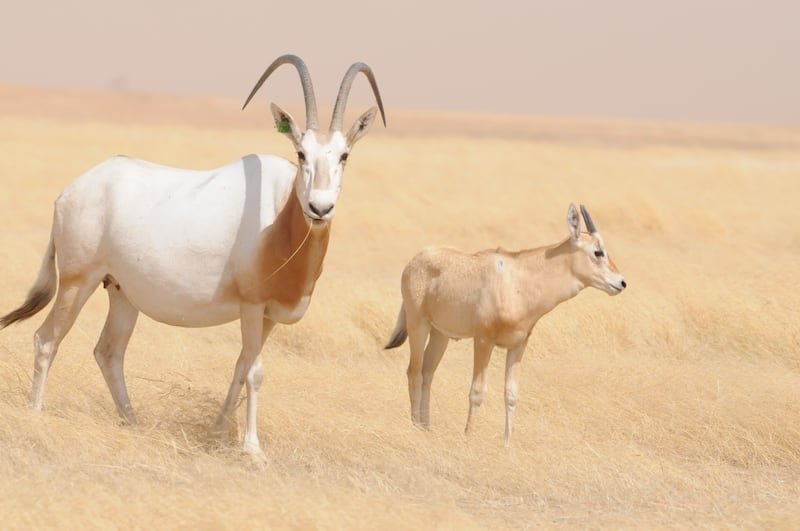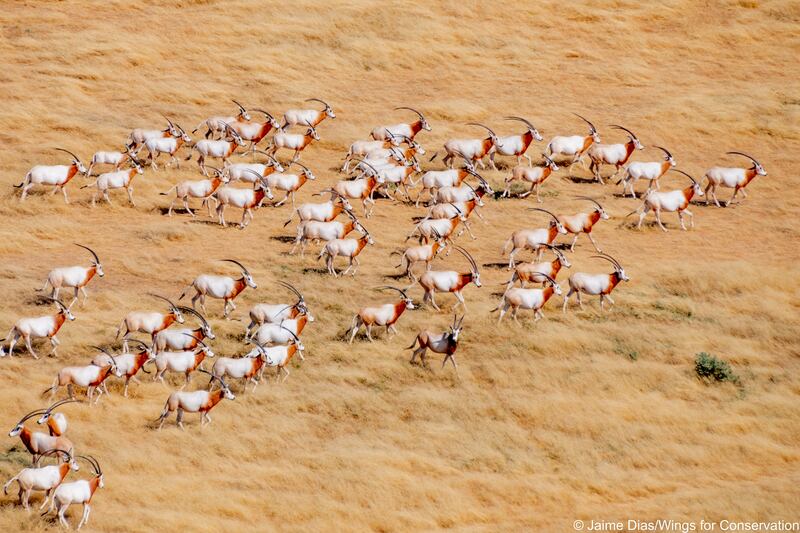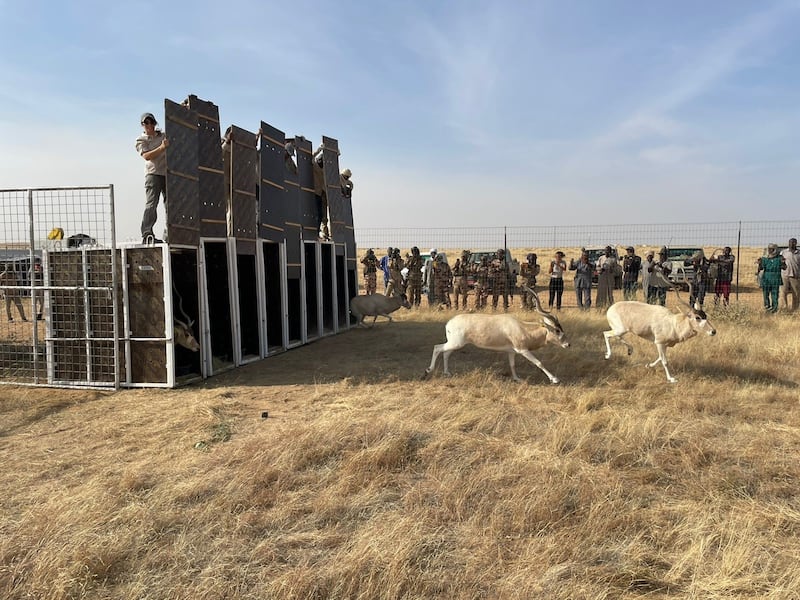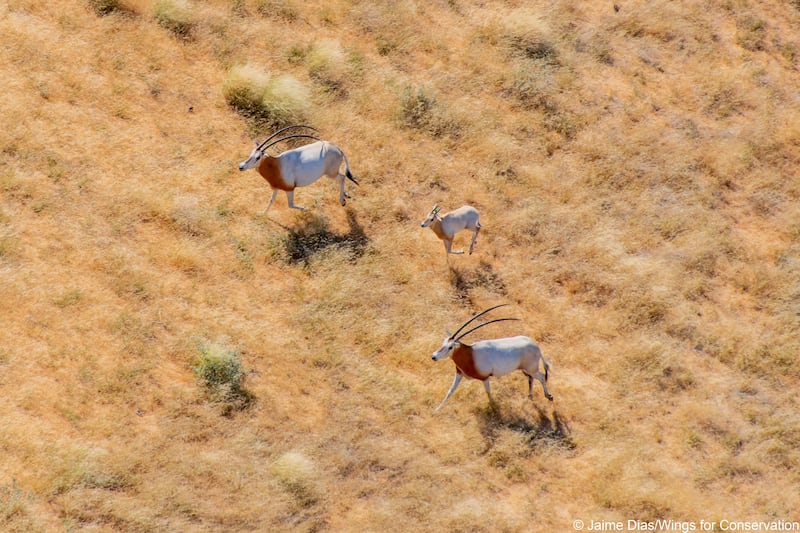Scimitar-horned oryx bred in the UAE have been released into a game reserve in Africa as part of plans to create a 500-strong self-sustaining herd.
The Environment Agency Abu Dhabi initiative added 20 scimitar-horned oryx and 25 addax, which are both types of antelopes, to the herd in Chad in March.
That brought the number of scimitar-horned oryx in the wild to 460, with 15 calves born so far this year, as well as 96 wild Addax, with five calves born this year.
Several scimitar-horned oryx and addax have been fitted with satellite tracking collars to monitor their movements.
“This pioneering project was inspired by the insightful vision of the late Sheikh Zayed, who noticed that scimitar-horned oryx numbers were declining rapidly and wished to see them flourish once again,” said Dr Shaikha Salem Al Dhaheri, Secretary General of Environment Agency Abu Dhabi.
“We are currently very close to achieving our goal of having a herd of 500 scimitar-horned oryx in Chad and, due to the success of this project, we are aiming to go beyond this figure and ensure that the numbers in the wild increase further.
“Alongside the scimitar-horned oryx herd, we are working closely with the government of Chad to also reintroduce addax and dama gazelles, and in time we will witness increased numbers of these species, hopefully paving the way for their removal them from the extinction danger list.”
In March, the agency also successfully released five dama gazelle, which joined the herd of other captured wild dama gazelle in the programme.
It is believed that the last scimitar disappeared from Chad in the late 1980s before the species was officially declared extinct in the wild globally by the International Union for the Conservation of Nature in 2000.
The agency programme to repopulate the 77,950 square kilometre Ouadi Rimé-Ouadi Achim Wildlife Reserve began in 2014, with the first shipment of the oryx breed released back into their natural habitats in 2016. It represents the world’s largest mammal reintroduction programme.
The second phase of the reintroduction programme added the critically endangered species the addax. The first pilot batch of 15 animals was released in November 2019, followed by the second group of 25 addax in March 2020.
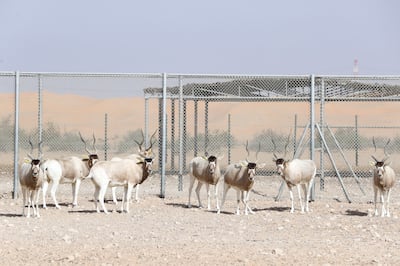
Scimitar-horned oryx are named after their blade-like horns, which are long and curved like an Arabian sword. They can survive for months, and even years, without drinking water, as they receive most of their fluid intake from the plants they eat.
They can sense even small variations in air humidity over distances of up to 100 kilometres, which meant they were historically followed by tribes searching for water.
Addax also rarely need to drink to survive. Their populations have been ravaged by poaching during the last century.
